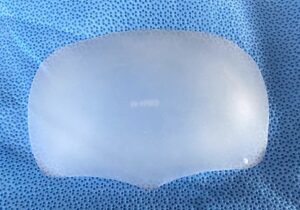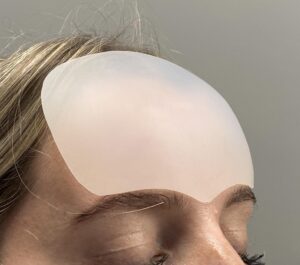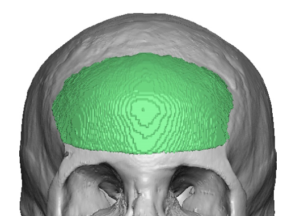While there are a large number of implants available for aesthetic augmentation of the middle and lower face, the upper third of the face (forehead) has remained devoid of any such off the shelf option. Forehead bone augmentation have up to the present time only been available using injection materials, bone cements or a custom forehead implant method.
While the forehead can be augmented by injectable fillers it has to be repeated for maintenance of the effect. Fat injections can also be used but is unpredictable in terms of volume survival and contour shape and can be very difficult to revise or remove it. Bone cements was an historically and proven method for forehead augmentation but requires a large scalp incision to place and a high level of surgical expertise to get it shaped properly. Custom forehead implants are the ideal approach and any degree of complexity, asymmetry or expanded footprint beyond the temporal lines makes their use mandatory. But in more modest forehead shape deficiencies it adds considerable cost to the surgery.
One of the most common aesthetic forehead shape concerns is in females. The most aesthetic forehead shape in women has a more vertically inclined forehead that has a rounder or more convex shape. Staying within the boundaries of the brow bones inferiorly, the frontal hairline superiorly and the temporal lines laterally the forehead shape can be augmented for increased roundness by a standard implant shape for a gradual to a more significant convex shape.
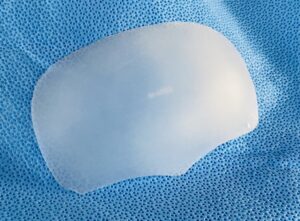
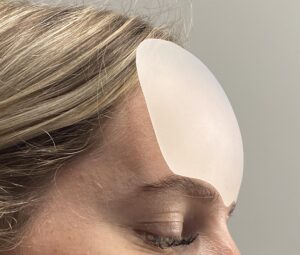

The female forehead implant is now available to provide permanent bony augmentation for an enhanced convex shape. They can be used when either an injectable forehead augmentation has failed or a more assured one-time permanent effect is desired. While the implants are soft and flexible it will create a firm and bony feel to the new forehead shape.
Dr. Barry Eppley
World-Renowned Plastic Surgeon



